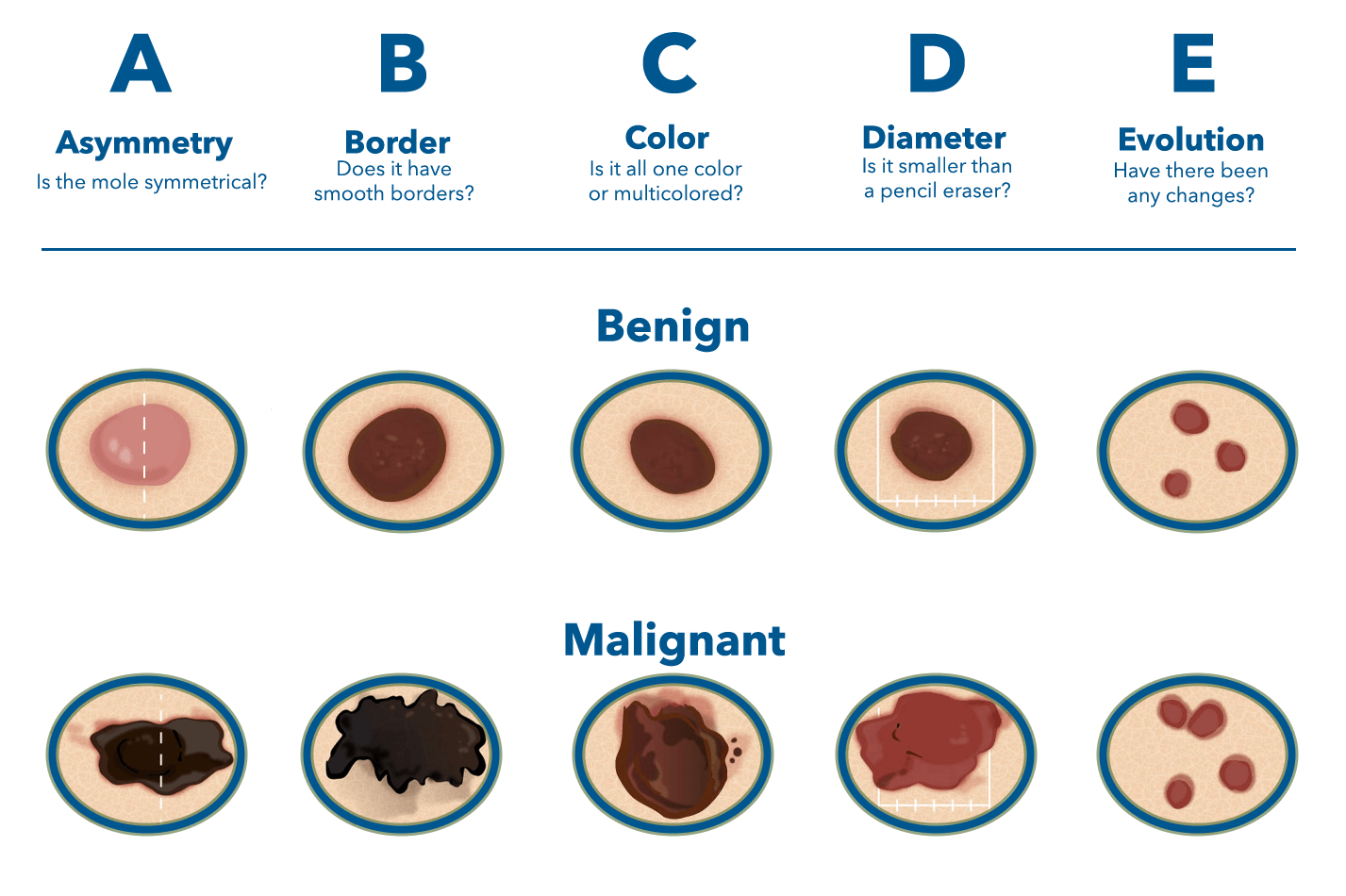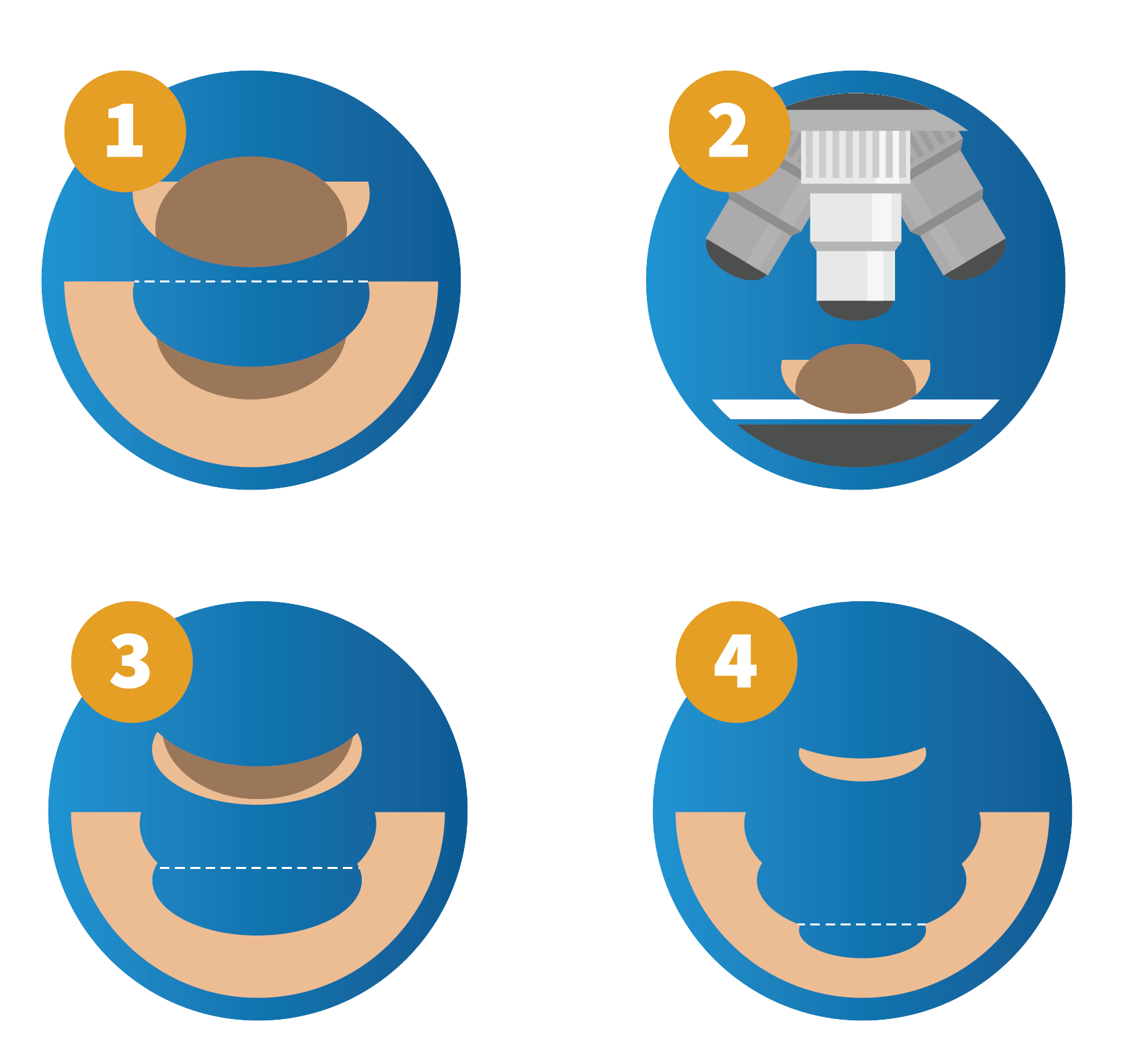The ABCDEs of Melanoma
A – Asymmetry:
Look for irregularly shaped moles. Lesions that cannot be split in half evenly should be considered suspicious.
B – Border irregularity:
Look for sharp, jagged, or notched borders.
C – Color:
Look for uneven color throughout the mole, multiple colors within the same mole, or moles that look much darker than others.
D – Diameter:
Look for moles that are increasing in size or moles that are out of proportion in size compared to the others.
E – Evolution:
Look for something that seems odd about a mole but doesn’t necessarily follow the other guidelines listed.


